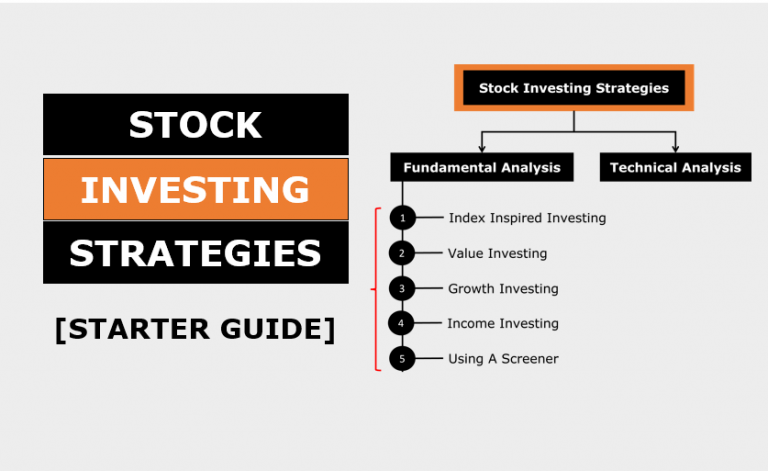Investing in stocks can be a great way to build wealth, but it comes with its risks. Yes, it’s possible to lose money when investing in stocks, especially if you’re not careful. Stock prices fluctuate based on many factors, like market conditions, economic events, or company performance. While the potential for high returns exists, the reality is that you could also face losses.
In this article, we’ll focus on practical strategies to help you reduce the risk of losing money in the stock market. Whether you’re just starting or have been investing for a while, understanding these strategies will help you protect your hard-earned money while maximizing your investment potential.
Let’s dive into the key ways to avoid losses and make your stock market experience safer and more rewarding.
Topics
1. Why You Can Lose Money in Stocks
Investing in stocks holds potential, but it also has pitfalls that can lead to losses. Here are the main reasons why investors might lose money and how each risk factor can impact your returns.
#1.1 Market Volatility
Stock prices fluctuate constantly due to various market conditions. Events like changes in interest rates, economic news, geopolitical tensions, or even global health crises can lead to sudden market swings.
For example, during the COVID-19 pandemic, markets dropped sharply, causing heavy losses for those who sold in panic.
Market volatility is natural, but it can lead to losses if investors react emotionally and make rushed decisions.
#1.2 Poor Stock Selection
Choosing the right stocks requires a basic understanding of a company’s financial health and potential.
Investing in companies with weak fundamentals, such as low profitability, high debt, or inconsistent earnings, can result in steep losses.
For instance, if a company you invest in reports poor quarterly results or management issues, its stock price might drop significantly.
Investing without proper research can lead to poor stock selection and potential losses.
#1.3 Lack of Diversification
Concentrating all your money in a few stocks or within a single sector can be risky. If that sector underperforms or if one of those companies suffers a setback, your entire portfolio could face significant losses.
For example, if you invest heavily in technology stocks and there’s a downturn in that sector, your investments could be impacted.
Diversification, spreading your investments across multiple sectors and stocks—, helps reduce the impact of poor performance in any one area.
#1.4 Emotional Investing
Investing decisions influenced by emotions often lead to poor outcomes.
It’s common to feel excited when stock prices rise and anxious during market declines, but acting on these emotions can result in losses.
For example, panic-selling during a market dip locks in losses, while buying stocks in a sudden rally can lead to overpriced purchases.
Emotional investing makes it difficult to stick to a long-term plan, leading to missed opportunities and losses over time.
Each of the above factors highlights why it’s essential to have a balanced approach to investing.
Recognizing these risks is the first step to building a safer, more resilient portfolio.
In the following sections, we’ll discuss strategies to help you avoid these common pitfalls.
2. Top Strategies to Avoid Losses in the Stock Market
Minimizing losses in the stock market requires a strategic, disciplined approach.
Here are some proven methods to help you protect your investments while optimizing for growth.
#2.1 Focus on Strong Fundamentals
Investing in companies with strong fundamentals means selecting those with healthy financials, consistent earnings, and good management.
Companies with strong fundamentals tend to perform better over the long term.
Look for metrics like low debt-to-equity ratios, high return on equity (ROE), and steady profit margins.
For example, blue-chip companies often have reliable growth potential. It makes them less risky during market downturns.
#2.2 Diversify Your Portfolio
“Don’t put all your eggs in one basket” is especially true for stock investing.
By diversifying across different sectors, such as technology, healthcare, and finance, you spread risk across various industries.
Diversification also extends to other asset classes, like real estate, bonds, or even gold, which can help balance your portfolio during stock market slumps.
This way, if one sector or stock underperforms, the impact on your overall portfolio is minimized.
#2.3 Long-term Investment Approach
A long-term approach allows you to weather short-term market fluctuations and benefit from the compounding effect over time.
For example, if you hold onto a fundamentally strong stock through its ups and downs, the long-term growth often outweighs short-term volatility.
Avoid the temptation to sell based on daily price movements. Instead, focus on a 5, 10, or even 20-year horizon to grow your wealth with minimal losses.
#2.4 Regular Monitoring and Rebalancing
The market is dynamic, so regular monitoring helps ensure your investments stay aligned with your financial goals.
Periodically reviewing your portfolio can reveal if certain stocks or sectors are now overrepresented.
If a stock has performed well and its value has grown significantly within your portfolio, it may be wise to sell a portion of it and rebalance by investing in other areas.
Rebalancing helps you manage risk and lock in gains.
#2.5 Avoid Emotional Decisions
Emotional investing often leads to impulsive moves, which can harm your returns.
For instance, fear might lead you to sell during a market downturn, while overconfidence might push you to buy high during a rally.
Both scenarios increase the likelihood of losses.
Create a solid investment plan and stick to it, regardless of market conditions. Remaining calm and objective will prevent hasty decisions that could erode your wealth.
By implementing the above strategies, you can avoid common mistakes and enhance the stability of your investments.
Remember, successful investing isn’t about chasing quick gains—it’s about building wealth steadily and safely over time.
Conclusion
Investing in stocks offers great potential for building wealth, but the risk of loss is real.
Market volatility, poor stock choices, lack of diversification, and emotional decisions can all lead to losses.
However, by focusing on companies with strong fundamentals, diversifying your portfolio, taking a long-term approach, regularly monitoring your investments, and avoiding impulsive decisions, you can greatly reduce these risks.
The goal of investing should be steady growth over time, not quick gains.
By applying these strategies, you’ll be better equipped to handle market ups and downs, protect your investments, and keep moving towards your financial goals with confidence.
Remember, successful stock market investing requires patience, discipline, and a clear plan.
Have a happy investing.






